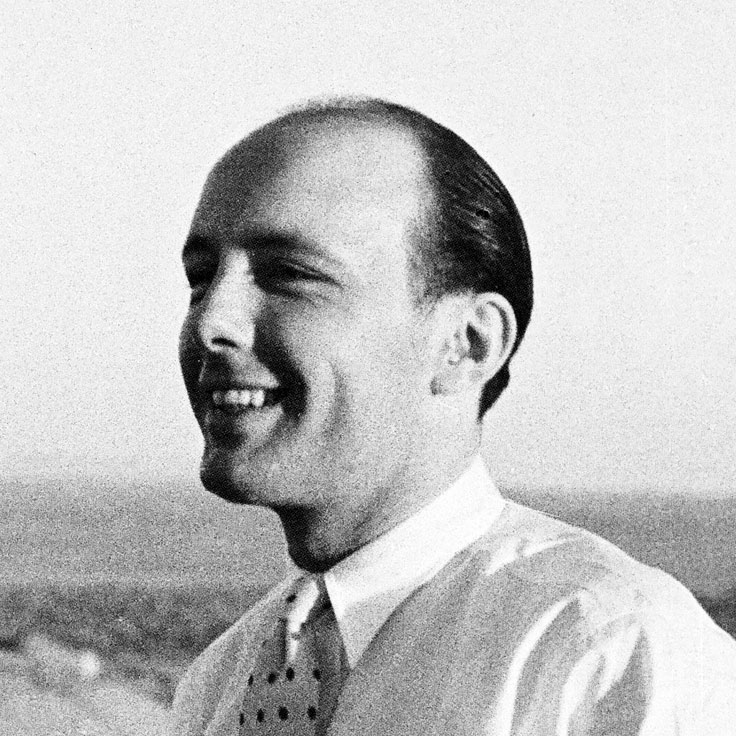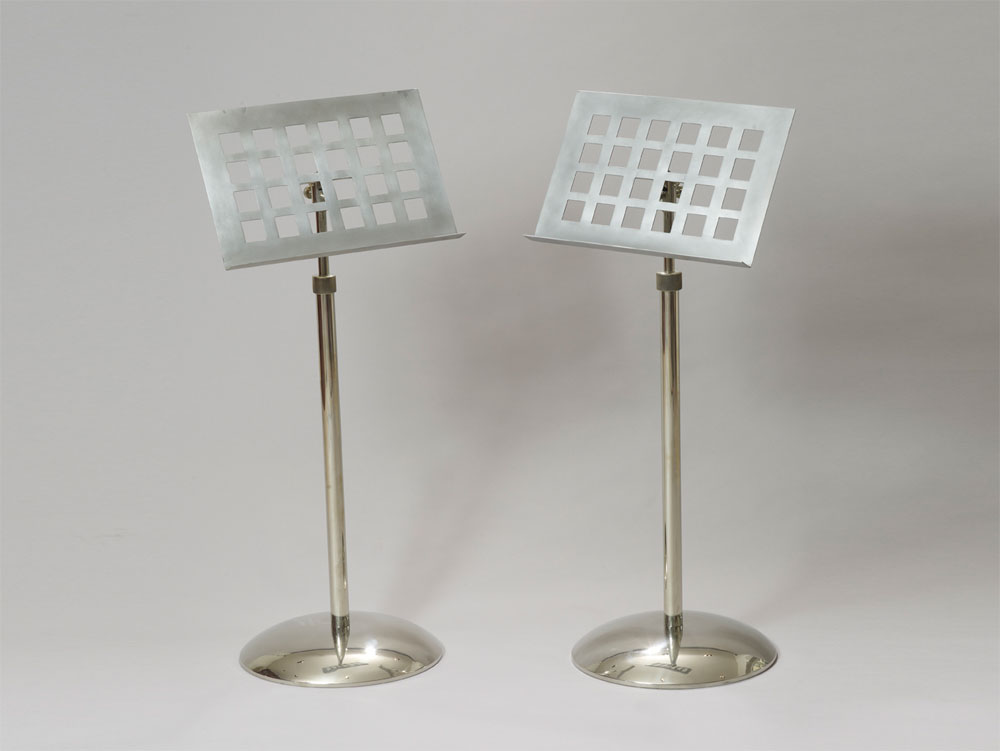
ECKART MUTHESIUS
17th May 1904 (Berlin) – 9th August 1989 (Berlin)
BIOGRAPHY
Architect, creator of furniture and light fittings.
The son of Hermann Muthesius, cofounder of the Deutscher Werkbund in 1908, Eckart Muthesius had Charles Rennie MacIntosh, founder of the Glasgow Style as his Godfather. The family house at Postdamer Chausee 49 in the Berlin-Nikolassee district, and his parents’ circle of friends immersed him from childhood in a world of artists, scientists and intellectuals which familiarised him with the constantly changing ideas on functional design, production lines and and standardisation. He was made aware very early of scene setting and the latest creative experimentation on light and flexibility by Naum Gabo and Laszlo Moholy-Nagy.
He studied art and architecture in Berlin and London, became acquainted with cabinetmaking, metalworking and painting techniques, and interned in various architects’ offices: James & Yerbury in London, then Raymond Unwin but it was, above all, in his father’s agency that he trained in architecture, photography and drawing for the agency’s publications.
In 1925 he married Miette Hardy, the daughter of Marcel Hardy, Doctor of natural science, private tutor then advisor to the Prince of Indore, also a member of the Allies Reparations Committee in Berlin.
In 1927, his father died from an accident; Eckart succeeded him momentarily to bring works in progress to an end, notably an office building on Potsdamer Platz in Berlin for which he designed a new neon sign.
He then founded his own architecture agency with an associate, Klemens Weigel, former student of and co-worker with his father. He carried out, among other works: the interior design of the Crawfords advertising agency in Berlin; the Revelation London luggage shop in Berlin in 1928; a Berlin residence for Carl-August von Gablenz, pilot and president of the German Lufthansa; in 1928/29 another residence in Berlin for von Hagen, president of the Senate; the Jockey Bar in Berlin in 1929.
In 1928, he met Prince Yeswant Rao Holkar Bahadur in Oxford and, in 1929, the future Maharajah of Indore commissioned a modern palace from him. He started to work on the plans of the palace for which he would complete the architecture and interior design in 1933. The plans, sketches, technical installation projects and the furniture specially designed for the Palace were the subject of an exhibition in Berlin in January 1932 which was highly successful. The architect had as his watchword “Comfort, elegance and simplicity”, characteristics that his father had admired in the architecture of the Glasgow Style and that he had wished to translate into German housing and furniture. Numerous French creators of furniture, light fittings, carpets and craft items took part in this vast collection and received orders for important items: Louis Sognot and Charlotte Alix, Jacques-Émile Ruhlmann, Ivan da Silva Bruhns, Eileen Gray, Le Corbusier, Jean Perzel, Jean E Puiforcat, Desny, etc.
Once the palace was completed, numerous other projects were in prospect in Indore, notably a countryside residence, mobile apartments for railway carriages, boats, caravans, aeroplanes – which wouldn’t all be completed. Muthesius would occupy several administrative roles associated with the habitat and architecture in the state of Indore until 1939; at the same time, he continued to submit plans in India (Maharajah of Jaipur in 1936-1937, a hospital in Indore in 1937) and in Germany (plans for the German Pavillion at the 1935 Brussels Exhibition).
The war required him to return to Germany. He resumed his architecture agency work in Berlin with Klemens Weigel. In 1941, he received first prize for drawings submitted to a competition for a general hospital in Berlin Oranienburg and the construction that followed. At the end of the war, he received his first big order, to build the Sports Centre in Moscow but in the end, he preferred to stay in Berlin to take part in the work to rebuild the country. He would pursue a full career in both civil and private architecture until his death in Berlin in 1989.

